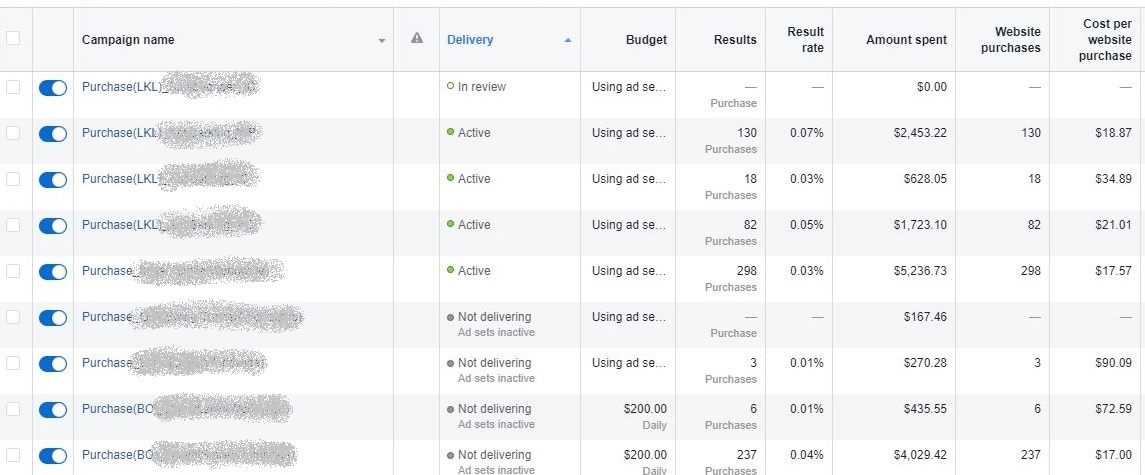I know it’s not a sound way to start a blog post, but let’s just dive right in. What is performance marketing?
Performance Marketing is a format of marketing and advertising where you pay after your targeted audience takes a certain action ranging from view and click to form fill and sales.
It must be evident to you that performance is predominantly digital. With the rise of search engines and social media, performance marketing has become extraordinarily popular.
In fact, every company or startup looking to give a boost to their growth relies on a performance marketing strategy. It is also an extended form of advertising. Because whether it is your new blog post or a report you just published or an eBook you want your audience to download, you need to rely on performance marketing.
In this blog post, we will further discuss:
- Payment models in performance marketing
- Performance marketing platforms
- Benefits of performance marketing, and
- Finally, the performance marketing trends
Payment Models
You already know how traditional advertising works. You buy a media spot like a TV commercial or a radio ad or a big hoarding at the corner of a popular street. And you pay upfront for that. And then you wait for the magic to happen.
Basically, once you have paid for the media, all you can do is sit back and wait for the result. Plus, this format of media buying is mostly for a longer duration to be effective—a week, a month, or just for a season.
Performance marketing allows you to pay for every user action as it happens. Basically, you can control your ad spending.
For instance, two days after starting your Facebook Ads you see no result, you can basically make changes. Or stop it (although I would not recommend that!) If you are using an affiliate model (more on affiliates later), you don’t need to worry about your costs at all. Because you’re paying only after a purchase happens
Essentially, that creates for us different types of payment models.
Cost per View
Popularly known as cost per impression or cost per mille (CPM), this payment model is used by almost all digital advertising mediums.
So how does it work? You choose a target audience on a platform or decide to show your ad on a website. You only pay for the number of views on your ads. The typical cost of an impression is predetermined. Or you are given a range of how much it will cost you on average to show your ads to a thousand people.
This is more effective with display and video ads. If you use Facebook Ads, Display Ads, or YouTube Ads, you will see a cost-per-impression bidding model.
Cost per Click
Also known as PPC (pay per click), this is the model where you pay for every click. That is, no matter how many times your ad is viewed, you will only be charged when someone clicks on it.
Usually, in this payment model, the upper limit of what you are willing to pay for a click is fixed. And you are not charged above that amount for a certain click. Almost all performance marketing platforms offer a cost-per-click model.
Cost per Lead
Widely popular in the finance industry and B2B, in this payment model, you only pay when someone generates a lead for you. The cost of every lead is predetermined.
If you are a business working with a performance marketing agency on this model, the agency will mostly ask you to put your marketing budget on this. So you pay a commission to the agency for every lead as well as the advertising cost.
Cost per Sale
If you have run a dropshipping business, you already know how it works. This payment model predominantly works with affiliate marketing. When a sale comes from referral traffic from an affiliate, you pay a predetermined commission to the affiliate.
Performance Marketing Types and Platforms
There are various ways you can plan your performance marketing campaigns. It depends on the channel and type you want to use.
There are primarily four types of performance marketing: social media, search, native, and affiliate. Apart from this, sponsored content and influencer marketing (which are not typically performance marketing methods) can also be used in a performance marketing framework.
Social Media
You can use almost all social media platforms and their self-serve ad platforms to run performance marketing campaigns. Here are some of the most popular in 2019:
Apart from the popular ones, there are also rising platforms like Tik Tok and Pinterest which offer self-serve advertising platforms.
Search Engine
If your audience is searching for a product or service that your business offers, search engine ads are for you. The world’s most popular search engine, Google, offers you a popular advertising platform, Google Ads.
In case you are not aware of other search engine advertising platforms, here are some for you:
- Bing Ads
- Duck Duck Go (managed via Bing Ads)
- Apple Search Ads
- Amazon Advertising
Native Advertising
Native advertising is a type of advertising that matches the form and function of the platform upon which it appears.
Basically, the way an ad appears on a website matches the look and feel of the website, making it not look like an ad.
This type of performance marketing became highly popular in the second half of the twenty-first century. Two of the biggest platforms for native advertising are Taboola and Outbrain.
If you are in India, you can also try Colombia Ads from Times Internet and Daily Hunt’s new self-serve ad platform.
Affiliate Marketing
Affiliate marketing is so popular because it allows so many affiliates around the world to generate passive monthly income. Basically, you create an affiliate program for your product. People join your program and promote your product. And you pay an affiliate commission when a sale is attributed to them.
Sponsored Content
As I said earlier, sponsored content is not always a performance marketing technique. This is because typically, sponsored content involves an upfront cost just for creating a sponsored content.
However, some companies charge only for the views or clicks that came on the sponsored content. This also ensures that you only pay for the impact that a sponsored content created.
Influencer Marketing
Like sponsored content, you can choose to pay an influencer for the impact it creates either in terms of views, clicks, or sales. This also ensures that the influencer takes interest in your product. And puts genuine effort to promote your product.
Benefits of Performance Marketing
Why did we ever need performance marketing?
A Half the money I spend on advertising is wasted; the trouble is I don’t know which half of it – John Wanamaker, United States merchant, religious leader and political figure, considered by some to be a “pioneer in marketing”.
That in essence sums of the basic problem with traditional advertising.
First, you cannot track how many people actually saw a banner you put on the highway. Second, attribution: you would never know how many people actually bought your product after looking at the ad.
Lastly, you can, at best, make a guess about what kind of people are seeing your ad.
This is what digital marketing in general, and performance marketing in specific, overcame. Here is how performance marketing overcome these challenges.
Trackable and Measurable
Here is a screenshot from one of the Facebook ad campaigns we did for a client:

You can easily see how much you spent on each campaign, the number of purchases, the cost per purchase, and so on. Essentially, you can track the return on every penny you spend.
It is this ability to track and measure your key business and marketing performance metrics that make performance marketing suitable for your media plan.
Low Risk and Controlled Expenditure
On a specific Wednesday at 8:14 PM you felt a campaign is not working or an ad is not performing well, you can simply turn it off. So you don’t have to worry about paying upfront advertising costs.
Specific Targeting and Retargeting Ability
With performance marketing, you can target a very specific audience. For instance, you can target only women living in a specific ZIP code of Mumbai. Or you can show your ads to only those people who visit your website. Or show the same products to a person who added them to the cart on your website yesterday.
Conclusion
Well, that’s performance marketing for you!
According to Blue Corona, businesses make an average of $2 in income for every $1 they spend on Google Ads. All performance marketing channels achieve their objectives quickly across each step of a marketing funnel.
It even assists you in nurturing your audience using retargeting and making them engaged throughout their buyer journey.
I hope if you are new to performance marketing, this blog post was valuable for you. If you feel there is something more that could make this blog post better, please feel free to add it in the comments.
If you have more queries or questions, please feel free to write to us or add them in the comments.

